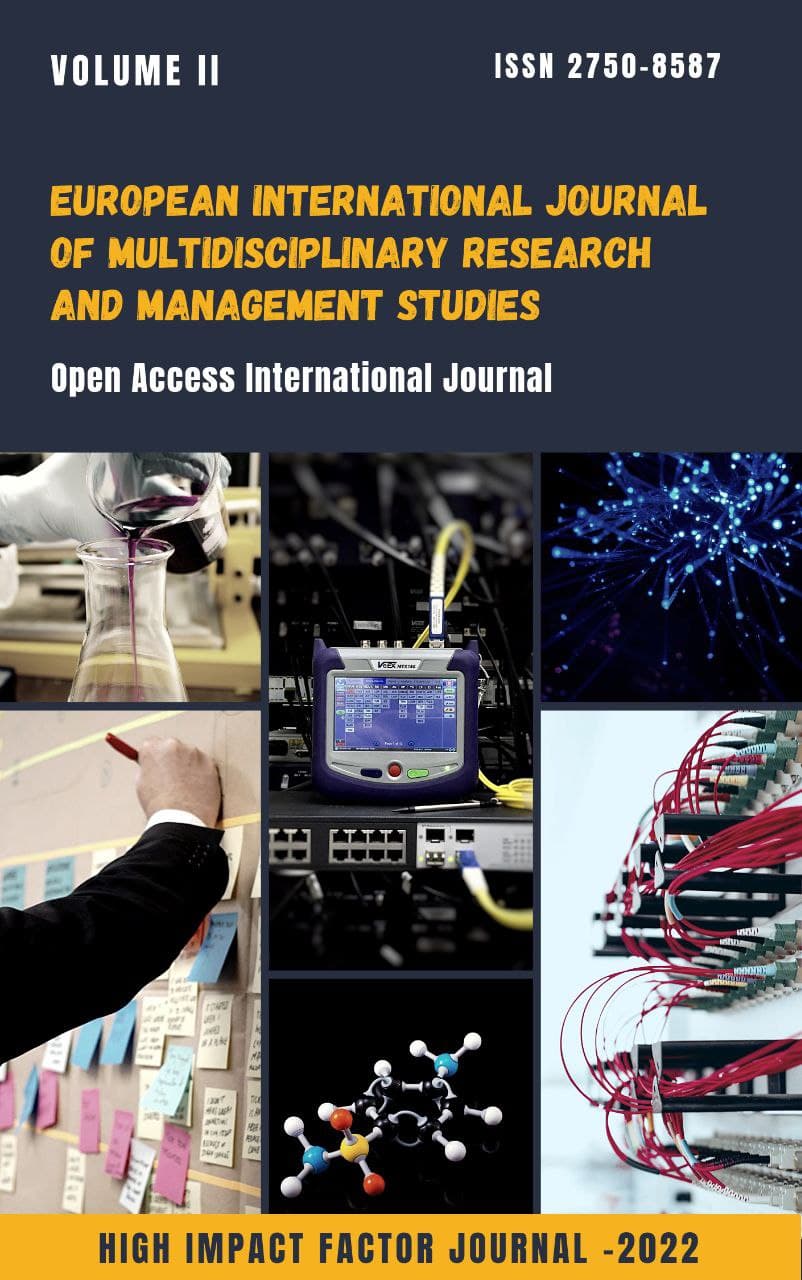THE POSSIBILITY OF COLORING AND PRINTING SANITARY-HYGIENIC PAPER WITH NATURAL DYES
DOI:
https://doi.org/10.55640/eijmrms-02-10-51Keywords:
Natural dye, extract, pomegranateAbstract
This article presents the results of a study of the possibility of coloring and printing sanitary-hygienic paper products with natural dyes based on local flora, which have medicinal properties. The results of studies of the effect of the composition of the dye solution on the coloristic and qualitative properties of paper are also presented. As a result of the results obtained, it is possible to propose an economically advantageous technological mode for the production of new ranges of hygienic and sanitary papers.
References
Amirova N.S. «Разработка эффективных процессов получения насыщенных и прочных окрасок на натуральном шелке», dissertation of the Candidate of Technical Sciences.: Abstract. dis. ... Candidate of Technical Sciences. – T.: 2010. - 17 p.
Amirova N.S., Abdukarimova M.Z. Possibility of intensive dyeing of cotton fabric with natural dyes.// International journal of Research, Volume-04, // Issue – 02, February 2017, 158-160.
Amirova N.S. Possibility of silk coloring by natural dyes. // Vienna «European Science review», 2016 y., No 9. – Volume.// 173-1762012 [ISSN 2310-5577].
Saeedeh Rafiei, “Dyeing of silk fibers with natural dye extracted from different parts of Ficus Johannis Boiss plant”, Journal of Apparel and Textile Science and Technolog, 2022 y., Oct.6. – Volume//. http://www.jtst.ir/article_158519.html?lang=en
Downloads
Published
How to Cite
Issue
Section
License
Copyright (c) 2022 Rakhmonova S.R.

This work is licensed under a Creative Commons Attribution 4.0 International License.
Individual articles are published Open Access under the Creative Commons Licence: CC-BY 4.0.


